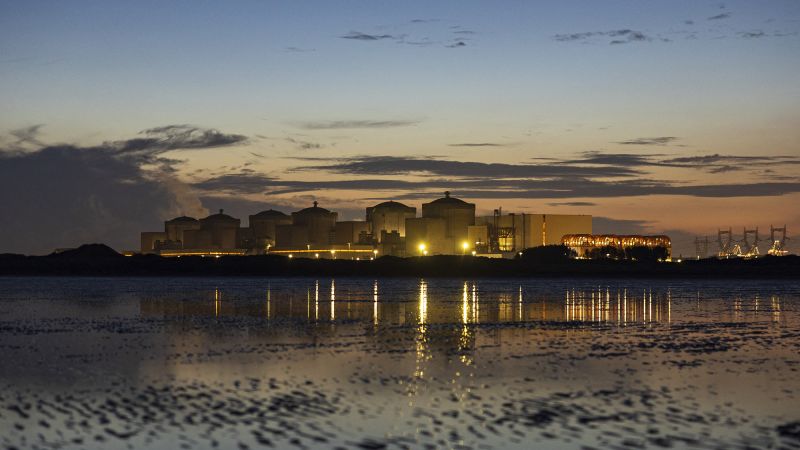In a significant development concerning France’s nuclear energy landscape, four reactors at the Gravelines nuclear power plant were forced to shut down late on Sunday due to an unexpected adhesion of jellyfish in their cooling systems. The operator of the plant, Électricité de France (EDF), announced this shutdown on Monday and attributed this unusual occurrence to elevated water temperatures, a phenomenon closely linked to global warming.
The Gravelines nuclear power plant, situated in northern France, is noted as one of the largest in the nation. The cooling system of this extensive complex relies on a canal connected to the North Sea, and the reactors have a combined output of 5.4 gigawatts. Each of the six units of the facility is capable of generating approximately 900 megawatts of power. With the sudden halting of the four reactors, coupled with the planned maintenance that had already placed two additional units offline, the entire plant has ceased its energy production activities.
In recent years, the beaches surrounding Gravelines, located strategically between the prominent cities of Dunkirk and Calais, have reported a notable increase in jellyfish numbers. This rise is attributable to warming ocean temperatures and the influx of invasive species. Marine biology consultant Derek Wright, associated with the National Oceanic and Atmospheric Administration Fisheries, highlighted the correlation between warmer waters and the proliferation of jellyfish. As marine temperatures rise, the conditions for jellyfish breeding become increasingly favorable, thereby extending their reproductive periods.
Moreover, the transportation of jellyfish across vast distances presents another problem. According to Wright, jellyfish can inadvertently hitch rides on cargo tankers. They enter the ballast tanks in one port only to be discharged into foreign waters, where they can establish new populations. The Asian Moon jellyfish, a species native to the Pacific Northwest, was first identified in the North Sea in 2020. This jellyfish species thrives in calm waters abundant with animal plankton, often found in areas like ports and canals, and has been observed causing similar issues in nuclear facilities in various countries such as China, Japan, and India.
Wright pointed out that while nuclear energy is frequently praised for its cleanliness, the unintended consequences of heat pollution resulting from such energy facilities should not be overlooked. The rising temperatures of water bodies can undoubtedly enhance biological challenges, by spawning invasive species that challenge the operational integrity of energy production mechanisms like the Gravelines plant.
Following the incident on Sunday, EDF reported that Reactors 2, 3, and 4 experienced automatic shutdown procedures just before midnight due to congested filter systems in the pumping stations that were heavily obstructed by a significant and unpredictable jellyfish swarm. Shortly thereafter, Reactor 6 also ceased operations. EDF assured stakeholders that the safety of the facilities, the personnel, and the broader environment was not compromised throughout this episode.
It is also worth noting the geographical and socio-political ramifications of the Gravelines nuclear power plant’s position. Nearby beaches have increasingly become locations for migrants seeking to cross into Britain, highlighting the complex interlinkages between environmental concerns, energy production, and human movements. Thankfully, the invasive jellyfish in question do not pose a threat to human health as they lack stinging capabilities, which adds an interesting layer to the ongoing dialogue surrounding climate change and invasive species.
In conclusion, the shutdown of reactors at the Gravelines nuclear power plant serves as a stark reminder of the far-reaching impacts of climate change, especially concerning marine ecosystems. As water temperatures continue to rise due to global warming, the energy sector must grapple with both the operational challenges presented by invasive species and the broader environmental implications of their energy production practices.











